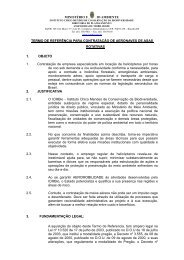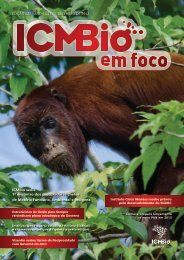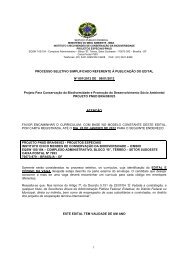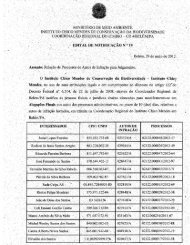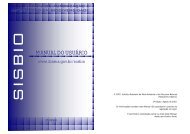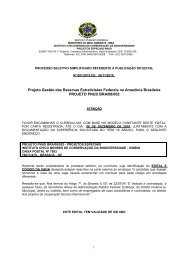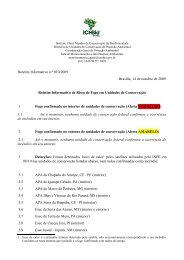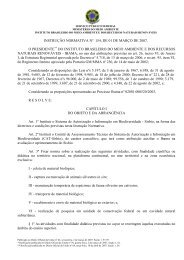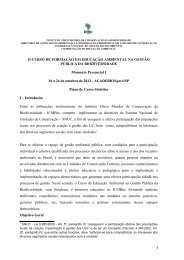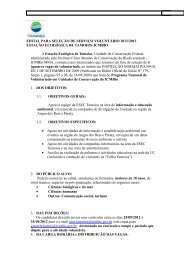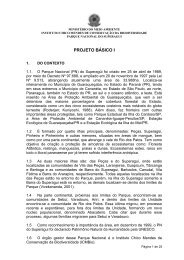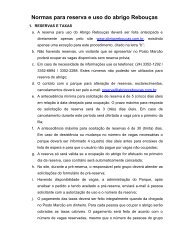Create successful ePaper yourself
Turn your PDF publications into a flip-book with our unique Google optimized e-Paper software.
ABSTRACT<br />
Fire is an important landscape modifier element and many<br />
times wildfires have a devastating potential, constituting a<br />
major threat to biodiversity. The Itatiaia National Park (PNI) is<br />
a protected area of historical and ecological significance,<br />
sheltering important remnants of Atlantic Forest biome. The<br />
Study Area (AE) was defined as the own PNI area and a 3 km<br />
border. This work aims to expand knowledge about fire<br />
occurrence through a geoecological analysis in which we seek<br />
to establish quantitative and qualitative relationships between<br />
landscape elements, including the action of man upon it. The<br />
largest number of fires in the EA usually occurs in August,<br />
however the largest concentration of burned area is recorded<br />
for the month of September, when the accumulated rainfall<br />
reaches lower levels. The largest number of fires was recorded<br />
outside the boundaries of PNI, but the largest burnt areas were<br />
inside it, possibly due to extensive portions of continuous<br />
grassland formations. The statistical distribution of the number<br />
of fires was used as a parameter to define the ranges of each. It<br />
was found that 58% of the areas affected by fires are at steep<br />
slopes, 51% have convex shape (high), 73% are under high<br />
incidence of solar radiation, 92% showed high combustibility<br />
and 78% were located above 2,000 m. The analysis of the<br />
precipitation showed the inverse relationship of fires with<br />
antecedent precipitation, especially in years of major fires,<br />
when these conditions were well below average. Six rainfall<br />
indicators of short and medium term were evaluated,<br />
concluding that they must be used together to diagnose critical<br />
conditions for the occurrence of fires. From spatial analysis of<br />
the main variables related to the risk to the ignition, it was<br />
found that 73% of fires are less than <strong>15</strong> m distance of transport<br />
routes, buildings or private property within the PNI area and<br />
93% of cases within the Park are wholly or partially inserted in<br />
these properties. A map of susceptibility to the occurrence of



